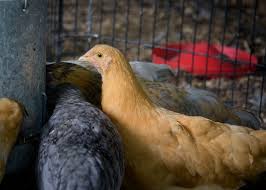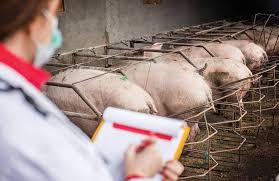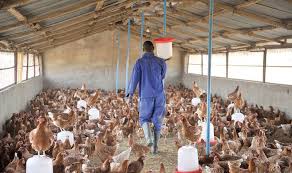The starting point of field biosecurity is the reception of a healthy flock from the hatchery. This also implies healthy breeders and a good biosecurity program both at the hatchery and during the transport of chicks to the house.
However, as today’s genetics have become so advanced, they have also become less resistant, thus requiring optimal biosecurity conditions. Various vectors can be responsible for the transmission of diseases apart from unhealthy chicks. These vectors can be categorized as follows:
Read Also: Amazing Health Benefits of Uziza Leaf
Disease Vectors in Poultry and Pig Houses

1. Mobile Biological Vectors: People, rodents (which can transmit Pasteurelosis, Salmonellosis, etc.), insects (carrying Avian Viruela, Marek, IBD, Salmonella, E. coli, Campylobacter, etc.), wild birds (which often carry Avian Influenza, Pasteurella, Salmonella, etc.).
2. Mobile Mechanical Vectors: Vehicles, which can act as carriers of IBD and Salmonella.
3. Nutritional Vectors: Feed (which may contain Salmonella, Paramyxovirus, IBD, etc.) and water (often containing enterobacteria like Salmonella and E. coli).
4. Static Vectors: Litter, fluff, surfaces (such as floors, walls, roofs), all of which can transmit IBD and Salmonella spp.
Challenges in Biological Disease Control
On the macro-biological side, controlling rodents and preventing the entrance of wild birds are the primary challenges. On the meso-biological side, the use of effective insecticides can be useful.
Procedures for Poultry and Pig House Hygiene

Hygiene involves both cleaning and disinfection. Disinfection without cleaning is ineffective and a waste of resources.
A. Cleaning Procedures
Cleaning involves the removal of visible dirt from surfaces using water and a detergent. The objective is to make the surface as free as possible from organic material that would interfere with the effectiveness of disinfectants. The effectiveness of a detergent depends on four key factors:
1. Chemical Energy: The pH and concentration of the detergent determine its ability to clean. Alkaline detergents remove proteins and fats, while acidic detergents remove mineral deposits like scale.
2. Thermal Energy: Fat begins to dissolve at around 95°F.
3. Physical Energy: High-pressure washers provide the necessary physical force for cleaning.
4. Contact Time: Allowing the detergent sufficient time to work enhances its effectiveness and does not require any additional cost.
B. Disinfection Procedures
Disinfection aims to reduce the number of pathogens by 99.99% (log 4 reduction). Disinfectants must meet several criteria:
1. Compatibility: The disinfectant must be compatible with the cleaning agent used. If the detergent contains cationic surfactants, the disinfectant should not contain anionics.
2. Composition: Disinfectants should contain a combination of active ingredients to maximize synergy. For instance, VIROCID® contains glutaraldehyde, two types of quaternary ammonia, and isopropanol, while KICK START® contains stabilized hydrogen peroxide and organic acids.
3. Safety: Disinfectants must be safe for people, animals, and equipment, as well as environmentally friendly.
4. Efficacy: Disinfectants should offer full-spectrum activity, including bactericidal, fungicidal, virucidal, and sporicidal properties.
5. Versatility: The disinfectant should be suitable for multiple application methods such as spraying, foaming, and fogging.
6. Cost/Benefit: The cost of the disinfectant should be considered in its diluted form rather than its per-gallon price.
Read Also: Benefits of Independent Leaf
Water Treatment in Poultry and Pig Houses

In addition to cleaning and disinfecting surfaces, it is important to clean and disinfect waterlines. The biofilm a polysaccharide layer that forms when vitamins and medication are added to the water harbors enterobacteria like Salmonella and E. coli.
This biofilm obstructs the proper functioning of medicines, vaccines, and other additives, and scale buildup can block water flow. Chlorine, which is neutralized by organic matter, cannot penetrate or remove biofilm.
The biofilm can only be removed by oxidation, with stabilized hydrogen peroxide being an effective agent. When combined with organic acids, it also removes scale. Products without heavy metals (e.g., silver nitrate) can be used during production without leaving residues in meat or eggs.
Best Practices for Poultry House Hygiene
The Dutch ICC (Integrated Chain Control) system outlines procedures for poultry house hygiene:
1. Preparation: Remove litter, empty drinkers, and clean all visible dirt. Wash down surfaces with a cleaning agent, allow 20 minutes of contact time, and clean drinker lines before rinsing and letting them dry.
2. Disinfection: Disinfect using sprays or foams. Foam provides better visibility of where the product has been applied and lasts longer on vertical surfaces and ceilings.
3. Terminal Disinfection: After installing new litter and refilling feeders and drinkers, perform terminal disinfection by fogging.
4. Continuous Disinfection: Continuously disinfect trucks, people (using hand hygiene and foot dips), and drinking water to maintain hygiene.
Steps for Cleaning and Disinfecting Broiler Houses
To ensure cleanliness in broiler houses, follow these steps:
1. Establish a Plan: Develop a cleaning and disinfection plan detailing dates, times, labor, and equipment needs.
2. Insect Control: Spray insecticide after the flock is removed and repeat before fumigation.
3. Dust Removal: Clean all dust and cobwebs from interior surfaces.
4. Pre-spray: Dampen remaining dust with a detergent solution, ensuring protective equipment is worn, and close the curtains in open-sided houses first.
5. Remove Equipment and Litter: Remove all equipment and litter, disposing of the latter according to government regulations.
6. Washing: Use a pressure washer and foam detergent compatible with the disinfectant, and rinse with hot water.
7. Clean Water and Feeding Systems: Drain, clean, and disinfect the water system, ensuring water pipes are cleaned at least once per flock to remove biofilm. Flush lines with fresh water before flock placement. Clean all feeding equipment, empty bulk bins, and fumigate when necessary.
8. Disinfection: Use an approved disinfectant effective against poultry bacteria and viruses, following the manufacturer’s instructions.
9. Fumigation: Formalin fumigation should be performed by trained personnel, ensuring the house is sealed for 24 hours after disinfection.
Hygiene of External Areas
External areas surrounding poultry houses should also be cleaned and disinfected, particularly around ventilators, feed bins, access routes, and doorways. Ideally, a 1-3 meter-wide area of concrete or gravel should surround the house. If not possible, ensure the area is free from vegetation, machinery, and equipment.
Evaluating Cleaning and Disinfection Efficiency
Regular monitoring of cleaning and disinfection efficacy is essential. Bacterial and Salmonella counts should be performed at least once per flock. Monitoring Salmonella trends allows continuous improvements in farm hygiene. If cleaning and disinfection are effective, no Salmonella species should be isolated during sampling.
Biosecurity is an integrated program that requires regular checks and complete implementation. Ideally, a single supplier should provide all necessary products and advice for both field sanitation and hatchery sanitation programs, especially for integrated companies.
Do you have any questions, suggestions, or contributions? If so, please feel free to use the comment box below to share your thoughts. We also encourage you to kindly share this information with others who might benefit from it. Since we can’t reach everyone at once, we truly appreciate your help in spreading the word. Thank you so much for your support and for sharing!
Read Also: Foods and Drinks That Can Cause Dehydration

